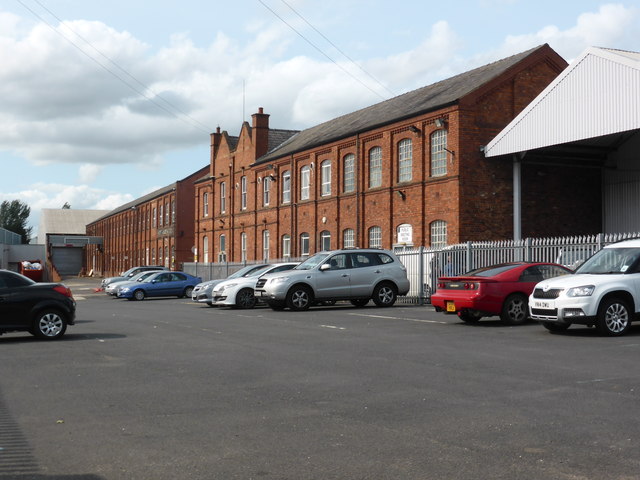Our vibrant town nestled in the heart of Worcestershire once wove its way into the annals of global industry.
The rhythmic hum of looms reverberated through the streets, and the air was rich with the aromas of wool and dye.
This is Kidderminster, a town that rightfully claimed the title of “Carpet Capital of the World.” From its modest beginnings in the 18th century to becoming a global manufacturing powerhouse, Kidderminster’s tale is one of creativity, perseverance, and, above all, the creation of exquisite carpets that adorned homes and buildings across the world.
Are you in the Kidderminster carpet trade? Have you a Kidderminster carpet story to weave? Let us know so we can tell your story. [email protected]
The Birth of an Industry
The story begins in the early 1700s. Kidderminster, then a small market town, was known for its production of woollen cloth. However, as the demand for carpets grew, enterprising local weavers began to shift their focus. This transition was no easy task; carpet weaving required different skills and equipment.
Nevertheless, the resourceful residents of Kidderminster quickly adapted, and by the mid-18th century, the town had established itself as a prominent centre for carpet production.
The true turning point came with the development of the “Kidderminster weave.” This innovative method produced a double-sided, flat weave carpet that was not only durable but also reversible, making it highly desirable for households across Britain. Known as a “flat weave” or “two-ply,” the Kidderminster weave soon became synonymous with quality and craftsmanship, with the town’s carpets being exported far and wide.
The Rise of the Carpet Titans
As the industry flourished, several families and companies rose to prominence, becoming household names synonymous with Kidderminster carpets. Among them were the Brintons, a family whose involvement in the carpet trade dates back to 1783. Brintons Carpets became one of the most respected names in the business, renowned for their high-quality products and innovative designs. The company introduced new weaving techniques and technologies, setting the standard for the industry.
Another notable name was the Tomkinson family, who, along with the Woodwards, dominated the local carpet scene. The Tomkinsons were known for their ability to blend traditional craftsmanship with modern techniques, producing carpets that were both beautiful and affordable. Their influence on the industry was profound, helping to solidify Kidderminster’s reputation as the epicentre of carpet manufacturing.
The Industrial Revolution and Beyond
The Industrial Revolution brought significant changes to Kidderminster’s carpet industry. The introduction of steam power and mechanised looms revolutionised production, allowing manufacturers to meet the growing global demand for carpets. The town’s strategic location near the newly constructed Staffordshire and Worcestershire Canal in 1771, and the arrival of the railway in the mid-19th century, facilitated the easy transport of raw materials and finished products, boosting the industry further.
By the 1850s, Kidderminster was producing the majority of carpets in Britain. The town’s products adorned the floors of grand estates, government buildings, and homes around the world. The distinctive designs, often featuring floral patterns and geometric shapes, were highly sought after, and Kidderminster’s carpets became a symbol of quality and luxury.
However, the rapid industrialisation of the 19th century also brought challenges. The working conditions in the mills were often harsh, with long hours, low pay, and the physically demanding nature of carpet weaving taking a toll on the workforce. Despite these difficulties, the community remained resilient, and the industry continued to thrive.
A Community Built on Carpets
The carpet industry shaped not only the economic landscape of Kidderminster but also its social and cultural fabric. The town’s growth was closely tied to the fortunes of its factories, with entire families often employed in the trade. Skilled weavers, dyers, and designers passed down their knowledge through generations, and the pride in their work was evident in the exquisite carpets produced.
Local communities developed around the carpet mills, with schools, shops, and social clubs springing up to support the growing workforce. The Aggborough area, now home to Kidderminster Harriers football club, was originally the site of one of the town’s largest carpet factories. Even today, remnants of the town’s industrial heritage can be seen in the architecture and layout of Kidderminster.
One fascinating anecdote from the town’s carpet history is the annual “Carpet Stepping” ceremony. In the 19th century, newly completed carpets would be laid out on the streets, and townspeople would walk over them as a form of celebration and inspection. It was a unique way for the community to come together and admire the craftsmanship of their local weavers.
The Decline and Legacy of the Carpet Industry
The mid-20th century brought significant challenges to Kidderminster’s carpet industry. Changes in fashion, the rise of synthetic fibres, and increased competition from abroad led to a decline in demand for traditional woven carpets. Many of the town’s historic mills closed, and the industry that had once defined Kidderminster began to fade.
Despite these challenges, the legacy of the carpet industry remains strong. Today, Kidderminster is home to the Museum of Carpet, located in the historic Stour Vale Mill. The museum celebrates the town’s rich heritage, showcasing everything from traditional weaving techniques to the latest in carpet design. It serves as a reminder of the skill, creativity, and hard work that made Kidderminster the Carpet Capital of the World.
A Lasting Impact
Kidderminster’s influence on the carpet industry can still be felt today. Companies like Brintons continue to produce high-quality carpets, combining traditional craftsmanship with modern technology. The town’s carpets are still used in prestigious locations around the world, from Buckingham Palace to the White House, a testament to the enduring appeal of Kidderminster’s designs.
Moreover, the town’s history of innovation and adaptation serves as an inspiration for future generations. Kidderminster’s story is one of resilience and reinvention, a testament to what can be achieved when a community comes together with a shared vision and purpose.
Kidderminster’s legacy as the Carpet Capital of the World is not just about the carpets themselves, but about the people who made them—the weavers, designers, and entrepreneurs who turned a small market town into a global icon. As the town continues to evolve, its rich heritage will always be a source of pride and inspiration for those who call Kidderminster home.
Are you in the Kidderminster carpet trade? Have you a Kidderminster carpet story to weave? Let us know so we can tell your story. [email protected]
Main Photo: © Copyright Chris Allen and licensed for reuse under this Creative Commons Licence.












